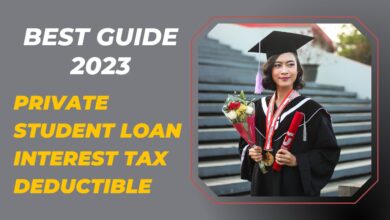How to Fill Out a Student Loan Application – news7today.in

How to Fill Out a Student Loan Application – In today’s increasingly competitive educational landscape, pursuing higher education often requires financial assistance through student loans. However, the process of securing a student loan can be overwhelming and confusing, especially for first-time applicants. Whether you’re a high school graduate or an adult returning to school, understanding the intricacies of student loan applications is crucial.
Student Loan Application –
Applying for a student loan can be a pivotal moment in your educational journey, but it can also feel overwhelming. Understanding how to fill out a student loan application correctly is essential to securing the financial support you need. In this article, we’ll take you through each step of the process on how to fill out a student loan application and make sure you’re well prepared to embark on this important application journey.
What is a student loan?
A student loan is a type of financial assistance provided to students to help them cover the costs of higher education. It is a borrowed sum of money that is intended to be used for expenses related to tuition, books, housing, transportation, and other educational necessities. Unlike scholarships and grants, which do not require repayment, a student loan application must be repaid with interest over a specified period.
Student loans are typically offered by government agencies, educational institutions, and private lenders. These loans play a significant role in making higher education accessible to a broader range of individuals who might not have the immediate financial means to cover the expenses associated with attending college or university.
Understanding Student Loan Application
Before delving into the application process, it’s essential to grasp the fundamentals of student loan application. Student loan application are financial aid resources offered by government agencies, private lenders, and educational institutions to help students cover the costs of tuition, books, housing, and other educational expenses. These loans are usually repaid over time, often with interest.
Types of Student Loan Application
When it comes to financing your education, there are various types of student loan application available to help you cover the costs of tuition, books, housing, and other educational expenses. Federal student loan application are generally preferred due to their lower interest rates, flexible repayment plans, and borrower protections. It’s important to exhaust all federal loan options before considering private loans, as private loans often have less favorable terms.
Understanding the different types of student loan application can help you make informed decisions about which options best suit your financial situation and future plans. Here are the types of student loan application:
1. Federal Student Loans
Federal student loans are loans offered by the U.S. Department of Education. These loans typically have more borrower-friendly terms and benefits compared to private loans. They are available to eligible students based on financial need and enrollment status. Here are some common types of federal student loans:
- Direct Subsidized Loans – These loans are available to undergraduate students with demonstrated financial need. The government pays the interest on the loan while you’re in school, during the grace period, and during deferment periods.
- Direct Unsubsidized Loans – These loans are available to both undergraduate and graduate students, regardless of financial need. Interest accrues from the time the loan is disbursed, but you can choose to pay it off while in school.
- PLUS Loans – Parent PLUS Loans are available to parents of dependent undergraduate students, and Graduate PLUS Loans are available to graduate or professional students. These loans require a credit check and have higher interest rates than other federal loans.
2. Private Student Loans
Private student loan application are offered by banks, credit unions, and online lenders. Unlike federal loans, private loans have terms and interest rates determined by the lender. These loans may be a good option if you’ve exhausted federal loan options and need additional funding. However, they often come with higher interest rates and less favorable repayment terms.
3. State-Backed Loans
Some states offer their own student loan application programs to residents. These loans may come with competitive interest rates and repayment options. State-backed loans vary widely in terms and availability, so it’s essential to research the options in your state.
4. Institutional Loans
Some colleges and universities offer their own loan programs to students. These loans are typically designed to fill gaps in financial aid packages. Institutional loans’ terms and interest rates can vary, so it’s important to review the details carefully.
5. Perkins Loans
Perkins Loans used to be a federal loan option, but the program expired in September 2017. However, if you have an existing Perkins Loan, you may still be eligible for forgiveness programs and favorable repayment terms.
6. Refinancing Loans
Refinancing loans are not traditional student loan application but rather loans obtained after graduation to consolidate or refinance existing student loan application. These loans can help you secure a lower interest rate and potentially lower monthly payments. However, refinancing federal loans may lead to the loss of certain borrower benefits.
Steps to Apply for a Student Loan
Applying for a student loan application involves several steps, each of which requires careful attention to detail and planning.
Step 1: Research and Evaluate – Before beginning the application process, research different loan options thoroughly. Understand the interest rates, repayment terms, and any associated fees for both federal and private loans. Evaluate your financial situation and determine how much you’ll need to borrow.
Step 2: Complete the FAFSA - The Free Application for Federal Student Aid (FAFSA) is a crucial first step in accessing federal financial aid, including grants, work-study opportunities, and loans. Completing the FAFSA provides a comprehensive view of your financial need, helping determine your eligibility for various aid programs.
Step 3: Explore Scholarships and Grants - Before relying solely on loans, explore scholarships and grants, which are forms of financial aid that don’t require repayment. Many organizations, schools, and private foundations offer scholarships based on academic achievements, extracurricular activities, and more.
Step 4: Compare Loan Options – If you determine that loans are necessary, compare the options available to you. Consider interest rates, repayment plans, and loan forgiveness programs. Federal loans are generally more flexible and offer borrower protections compared to private loans.
Step 5: Gather Required Documents - Depending on the loan type and lender, you’ll need various documents such as identification, income tax returns, and proof of enrollment. Gather these documents beforehand to streamline the application process.
Step 6: Complete the Application – Whether you’re applying for federal or private loans, follow the instructions carefully to complete the application accurately. Double-check all information and ensure that you meet the eligibility criteria.
Step 7: Review and Accept - Once you receive your loan offer, review the terms and conditions. For federal loans, make sure you understand the interest rates, repayment plans, and any borrower benefits. With private loans, carefully review the interest rates, repayment schedules, and any variable terms.
Step 8: Repayment Planning – Before accepting the loan, create a rough repayment plan. Understand how much you’ll need to repay each month after graduation and consider how it fits into your post-graduation budget.
Tips for a Smooth Student Loan Application Process
1. Start Early – Begin the application process well in advance to avoid last-minute stress. Some loans, like federal ones, have specific deadlines that you must meet.
2. Seek Guidance – If you’re unsure about any aspect of the application process, don’t hesitate to seek guidance from school counselors, financial aid officers, or even online resources.
3. Maintain Clear Records – Keep copies of all the documents you submit during the application process. This will be helpful in case there are any discrepancies or issues.
4. Understand Terms and Conditions – Before signing any loan agreement, thoroughly understand the terms, interest rates, and repayment schedules. Ask questions if anything is unclear.
5. Borrow Wisely – Only borrow what you need. It’s tempting to take out more than necessary, but remember that you’ll have to repay it with interest.
6. Explore Repayment Options – Federal loans often offer various repayment plans, including income-driven options. Research and select a plan that aligns with your financial circumstances.
Conclusion
Filling out a student loan application might seem daunting, but by following these step-by-step instructions, you can approach the process with confidence. Remember to research your options, gather necessary documents, and understand the terms before making any commitments. Your education is an investment, and with the right approach, you can secure the financial support you need to succeed.
Frequently Asked Questions
Q1: What’s the difference between federal and private student loans?
Federal loans are offered by the government and often have lower interest rates and more flexible repayment options. Private loans are provided by banks and other lenders and usually have higher interest rates but might be an option if you have good credit.
Q2: Is there a deadline for submitting the FAFSA?
Yes, the FAFSA has specific deadlines that vary by state and institution. It’s essential to complete the FAFSA as early as possible to maximize your chances of receiving financial aid.
Q3: Can I change my loan terms after accepting an offer?
In some cases, you might have the option to adjust your repayment plan after accepting a loan offer. However, it’s crucial to clarify this with your lender before finalizing the agreement.
Q4: How long does it take for a loan application to be approved?
The approval process varies depending on the lender and the type of loan. Federal loans typically have a more standardized process, while private loan approval timelines can differ.
Q5: What if I can’t afford my loan payments after graduation?
For federal loans, there are income-driven repayment plans that adjust your monthly payments based on your income. Private lenders may offer flexible repayment options as well; it’s essential to discuss your situation with them.
Read More – How to Use Student Loans to Pay Rent
Is Private Student Loan Interest Tax Deductible?
Navy Federal Pre Approval Car Loan: Simplify Your Car Buying Process
Car Insurance: 8 Surprising Things That Can Affect the Cost Insurance





